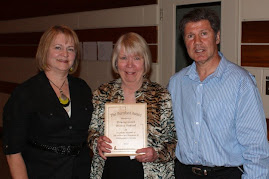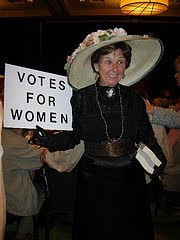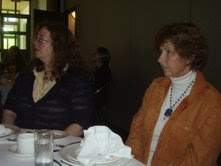So begins The Bell Jar, with an opening sentence that foreshadows events to come. Such a sentence promises the reader we are in for a remarkable story. If only the book lived up to that promise. If only its author had lived to write other, better books. If only.
Saturday, February 3, 2018
The Bell Jar by Sylvia Plath, Reviewed by Margie Taylor
It
was a queer, sultry summer, the summer they electrocuted the Rosenbergs . . .”
So begins The Bell Jar, with an opening sentence that foreshadows events to come. Such a sentence promises the reader we are in for a remarkable story. If only the book lived up to that promise. If only its author had lived to write other, better books. If only.
The Bell Jar was first published in London in 1963 under the pseudonym Victoria Lucas.
Ostensibly, Sylvia Plath didn’t want her mother and other family and friends to
be hurt by the way they were pictured. Friends have said she would never have
wanted the book to come out under her own name while her mother was alive.
But there were other reasons to hide behind a nom de plume. Plath
questioned the literary value of the book. She confided to a friend that she
thought of it as a pot boiler, “an autobiographical apprentice work which I had
to write in order to free myself from the past”. For someone who had been
receiving accolades for her poems and short stories since her college days,
this semi-autobiographical novel wasn’t serious enough to meet her own literary
expectations. In spite of the warm critical reception the book has maintained
over the years – in spite of my own respect for Plath as a woman and a writer –
I think her instincts were right. As a coming-of-age narrative The Bell
Jar is not in the same class as The Catcher in the Rye, A Tree
Grows in Brooklyn, or To Kill a Mockingbird. She had better books in
her, I know – it’s tragic that she didn’t live to write them.
We tend to speak of Plath in hushed tones. She was a gifted poet who
suffered from depression all her life. She was institutionalized on several
occasions and was treated multiple times with electroconvulsive therapy. The
Bell Jar, while not strictly a memoir, is autobiographical in all the ways
that matter.
I first read it in my twenties. I had my own struggles with depression and
I was profoundly affected by Plath’s description of undergoing shock treatment.
It seemed a barbaric procedure – it still does. But these scenes don’t occur
until we’re more than halfway through the book. For the first hundred pages or
so the writing is rather precious. It has the self-conscious cleverness of a
university English major. I kept feeling I was a reluctant guest at a party of
young people – students, I guess – all having what they assumed were witty,
original conversations about issues that ceased to be interesting to me about
three decades ago.
Esther Greenwood, a 19-year-old college student from Massachusetts, is one
of a dozen young women chosen to spend a month in New York working on a fashion
magazine. It’s a dream opportunity: “I was supposed to be having the time of my
life”. Instead, Esther feels numb. She drags herself from her hotel to work and
to parties and back to her hotel, feeling “very still and empty, the way the
eye of a tornado must feel, moving dully along in the middle of the surrounding
hullabaloo”. Torn between society’s expectations of the way she should
feel and her inability to feel anything at all, she attempts to join in with
the others, even resolving, unsuccessfully, to lose her virginity. When college
starts that fall she can’t concentrate on reading or writing, she can’t sleep.
Eventually she stops bathing and her mother takes her to a psychiatrist.
This is where, you would think, the story would get interesting. Having
had a few sessions with smug, even urbane psychoanalysts back in the day, I was
expecting some real insight into the politics of the doctor-patient
relationship. Instead we learn that Dr. Gordon is young, good-looking and
conceited, and not particularly adept at reading minds. After only a couple of
sessions, he recommends shock therapy. The description of the procedure is
short, graphic and unvarnished – in my opinion it’s one of the strongest pieces
of writing in the book:
“Dr. Gordon was fitting two metal plates on either side of my head. He
buckled them into place with a strap that dented my forehead, and gave me a
wire to bite.
“I shut my eyes.
“There was a brief silence, like an indrawn breath.
“Then something bent down and took hold of me and shook me like the end of
the world. Whee-ee-ee-ee-ee, it shrilled, through an air cracking with blue
light, and with each flash a great jolt drubbed me till I thought my bones
would break and the sap fly out of me like a split plant.
“I wondered what terrible thing it was that I had done.”
The treatment is not a success. Voices in her head taunt her: “[You’ve]
got the perfect setup of a true neurotic. You’ll never get anywhere like that,
you’ll never get anywhere like that”. She can’t sleep – her college professor
says her writing is factitious. Suicide presents itself as a way out – possibly
the only way out. She tries to hang herself but can’t find a place in her
mother’s house to tie the rope. With friends at the beach she swims out as far
as she can, hoping to drown herself. But each time she dives down under the
water, she bobs up again to the surface. One rainy afternoon she visits her
father’s grave on the outskirts of town. This seems to settle something in her
mind. The next morning, after her mother leaves for work, Esther hides herself
in a crawl space in the basement, swallows a large amount of sleeping pills,
and slips into unconsciousness. She awakens in a hospital with no permanent
physical injuries; when her brother asks, “How are you?” she looks her mother
in the eye: “The same,” she says. Nothing has changed.
It’s at this point Plath introduces the concept of the bell jar. On her
way to an expensive private hospital, courtesy of a famous novelist who’s
undertaken to fund her treatment, Esther knows she should be grateful. The
problem is, she can’t feel a thing:
“If Mrs. Guinea had given me a ticket to Europe, or a round-the-world
cruise, it wouldn’t have made one scrap of difference to me, because wherever I
sat – on the deck of ship or at a street café in Paris or Bangkok – I would be
sitting under the same glass bell jar, stewing in my own sour air.”
Esther’s new psychiatrist, Dr. Nolan, is young and female and although
she, too, recommends electroshock treatments, she assures Esther they will be
nothing like the terrifying procedure she endured at the hands of Dr. Gordon.
Under Dr. Nolan’s guidance, Esther experiences some improvement. She’s allowed
to leave the hospital from time to time and hopes to be discharged in time for
the winter semester at college. As the novel ends, she enters the interview
room where the hospital doctors are gathered to decide if she’s well enough to
be discharged. Dr. Nolan reassures her that she will be fine, but Esther isn’t
so sure.
“How did I know that someday – at college, in Europe, somewhere, anywhere
– the bell jar, with its stifling distortions, wouldn’t descend again?”
In the early morning hours of February 11th 1963, a month after the first
UK publication of The Bell Jar, Sylvia Plath turned on the gas and put
her head in the oven, having first sealed the rooms between her and her
sleeping children. She was 30 years old.
As I
said – if only.
Subscribe to:
Post Comments (Atom)











































































































































































































































































No comments:
Post a Comment